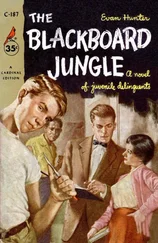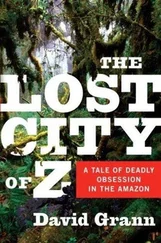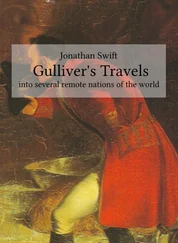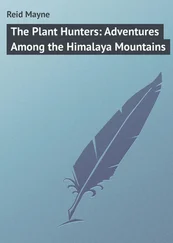Algot Lange - In the Amazon Jungle - Adventures in Remote Parts of the Upper Amazon River, Including a Sojourn Among Cannibal Indians
Здесь есть возможность читать онлайн «Algot Lange - In the Amazon Jungle - Adventures in Remote Parts of the Upper Amazon River, Including a Sojourn Among Cannibal Indians» весь текст электронной книги совершенно бесплатно (целиком полную версию без сокращений). В некоторых случаях можно слушать аудио, скачать через торрент в формате fb2 и присутствует краткое содержание. Жанр: Путешествия и география, Приключения про индейцев, на английском языке. Описание произведения, (предисловие) а так же отзывы посетителей доступны на портале библиотеки ЛибКат.
- Название:In the Amazon Jungle : Adventures in Remote Parts of the Upper Amazon River, Including a Sojourn Among Cannibal Indians
- Автор:
- Жанр:
- Год:неизвестен
- ISBN:нет данных
- Рейтинг книги:3 / 5. Голосов: 1
-
Избранное:Добавить в избранное
- Отзывы:
-
Ваша оценка:
- 60
- 1
- 2
- 3
- 4
- 5
In the Amazon Jungle : Adventures in Remote Parts of the Upper Amazon River, Including a Sojourn Among Cannibal Indians: краткое содержание, описание и аннотация
Предлагаем к чтению аннотацию, описание, краткое содержание или предисловие (зависит от того, что написал сам автор книги «In the Amazon Jungle : Adventures in Remote Parts of the Upper Amazon River, Including a Sojourn Among Cannibal Indians»). Если вы не нашли необходимую информацию о книге — напишите в комментариях, мы постараемся отыскать её.
In the Amazon Jungle : Adventures in Remote Parts of the Upper Amazon River, Including a Sojourn Among Cannibal Indians — читать онлайн бесплатно полную книгу (весь текст) целиком
Ниже представлен текст книги, разбитый по страницам. Система сохранения места последней прочитанной страницы, позволяет с удобством читать онлайн бесплатно книгу «In the Amazon Jungle : Adventures in Remote Parts of the Upper Amazon River, Including a Sojourn Among Cannibal Indians», без необходимости каждый раз заново искать на чём Вы остановились. Поставьте закладку, и сможете в любой момент перейти на страницу, на которой закончили чтение.
Интервал:
Закладка:
The matter was ended with this wise judgment, and there seemed to be no disposition to grumble or re-appeal to the great authority.
My life among the Mangeromas was, for the greater part, free from adventure, at least as compared with former experiences, and yet I was more than once within an inch of meeting death. In fact, I think that I looked more squarely in the eyes of death in that peaceful little community than ever I did out in the wilds of the jungle or in my most perilous adventures. The creek that ran near the maloca supplied the Indians with what water they needed for drinking purposes. Besides this the creek gave them an abundant supply of fish, a dish that made its appearance at every meal. Whatever washing was to be done—the natives took a bath at least twice a day—was done at some distance down the creek so as not to spoil the water for drinking and culinary purposes. Whenever I was thirsty I was in the habit of stooping down at the water's edge to scoop the fluid up in my curved hands. One morning I had been tramping through the jungle with two companions who were in search of game, and I was very tired and hot when we came to a little stream which I took to be the same that ran past the maloca . My friends were at a short distance from me, beating their way through the underbrush, when I stooped to quench my thirst. The cool water looked to me like the very Elixir of Life. At that moment, literally speaking, I was only two inches from death. Hearing a sharp cry behind me I turned slightly to feel a rough hand upon my shoulders and found myself flung backwards on the ground.
"Poison," was the reply to my angry question. Then my friend explained, and as he talked my knees wobbled and I turned pale. It seems that the Mangeromas often poison the streams below the drinking places in order to get rid of their enemies. In the present case there had been a rumour that a party of Peruvian rubber-workers might be coming up the creek, and this is always a signal of trouble among these Indians. Although you cannot induce a Brazilian to go into the Indian settlements or malocas , the Peruvians are more than willing to go there, because of the chance of abducting girls. To accomplish this, a few Peruvians sneak close to the maloca at night, force the door, which is always bolted to keep out the Evil Spirit, but which without difficulty can be cut open, and fire a volley of shots into the hut. The Indians sleep with the blow-guns and arrows suspended from the rafters, and before they can collect their sleepy senses and procure the weapons the Peruvians, in the general confusion, have carried off some of the girls. The Mangeromas, therefore, hate the Peruvians and will go to any extreme to compass their death. The poisoning of the rivers is effected by the root of a plant that is found throughout the Amazon valley; the plant belongs to the genus Lonchocarpus and bears a small cluster of bluish blossoms which produce a pod about two inches in length. It is only the yellow roots that are used for poisoning the water. This is done by crushing the roots and throwing the pulp into the stream, when all animal life will be killed or driven away.
It seems strange that during my stay among the Mangeromas, who were heathens and even cannibals, I saw no signs of idolatry. They believed implicitly in a good and an evil spirit. The good spirit was too good to do them any harm and consequently they did not bother with him; but the evil spirit was more active and could be heard in the dark nights, howling and wailing far off in the forest as he searched for lonely wanderers, whom he was said to devour.
Thinking to amuse some of my friends, I one day kindled a flame by means of my magnifying glass and a few dry twigs. A group of ten or twelve Indians had gathered squatting in a circle about me, to see the wonder that I was to exhibit, but at the sight of smoke followed by flame they were badly scared and ran for the house, where they called the Chief. He arrived on the scene with his usual smile.
He asked me to show him what I had done. I applied the focussed rays of the sun to some more dry leaves and twigs and, finally, the flames broke out again. The Chief was delighted and begged me to make him a present of the magnifier. As I did not dare to refuse, I showed him how to use it and then presented it with as good grace as I could.
Some time after this, I learned that two Peruvians had been caught in a trap set for the purpose. The unfortunate men had spent a whole night in a pit, nine feet deep, and were discovered the next forenoon by a party of hunters, who immediately killed them with unpoisoned, big-game arrows. In contrast to the North-American Indians they never torture captives, but kill them as quickly as possible.
I had plenty of opportunity to investigate the different kinds of traps used by the Mangeromas for catching Peruvian caboclos or half-breeds. First of all in importance is the pit-trap, into which the aforesaid men had fallen. It is simple but ingenious in its arrangement. A hole about nine feet deep and eight feet wide is dug in the ground at a place where the caboclos are liable to come. A cover is laid across this and cleverly disguised with dead leaves and branches so as to exactly resemble the surrounding soil. This cover is constructed of branches placed parallel, and is slightly smaller than the diameter of the pit. It is balanced on a stick, tied across the middle in such a manner that the slightest weight on any part will cause it to turn over and precipitate the object into the pit whence egress is impossible. Besides this, the walls of the pit are inclined, the widest part being at the bottom, and they gradually slope inward till the level of the ground is reached. When the victim is discovered he is quickly killed, as in the case noted above.
The second trap, which I had an opportunity to investigate, is the so-called araya trap. It is merely a small piece of ground thickly set with the barbed bones of the sting-ray. These bones are slightly touched with wourahli poison and, concealed as they are under dead leaves, they inflict severe wounds on the bare feet of the caboclos , and death follows within a short period.
The third trap, and the most ingenious of all, is the blow-gun trap. One day the sub-Chief, a tall, gloomy-looking fellow, took me to one of these traps and explained everything, till I had obtained a thorough knowledge of the complicated apparatus. The blow-gun of these Indians is supplied with a wide mouth-piece and requires but slight air pressure to shoot the arrow at a considerable speed. In the trap one is placed horizontally so as to point at a right angle to the path leading to the maloca . At the "breech" of the gun is a young sapling, severed five feet above the ground. To this is tied a broad and straight bark-strip which, when the sapling is in its normal vertical position, completely covers the mouth-piece. The gun was not loaded on this occasion, as it had been accidentally discharged the day before. To set the trap, a long, thin, and pliable climber, which in these forests is so plentiful, is attached to the end of the severed sapling, when this is bent to its extreme position and is then led over branches, serving as pulleys, right across the path and directly in front of the mouth of the blow-gun and is tied to some small root covered with leaves. When the caboclo passes along this path at night to raid the Indian maloca, he must sever this thin bushrope or climber, thereby releasing suddenly the tension of the sapling. The bark-flap is drawn quickly up against the mouth-piece with a slap that forces sufficient air into the gun to eject the arrow. All this takes place in a fraction of a second; a slight flapping sound is heard and the arrow lodges in the skin of the unfortunate caboclo . He can never walk more than twenty yards, for the poison rapidly paralyses his limbs. Death follows in less than ten minutes.
Читать дальшеИнтервал:
Закладка:
Похожие книги на «In the Amazon Jungle : Adventures in Remote Parts of the Upper Amazon River, Including a Sojourn Among Cannibal Indians»
Представляем Вашему вниманию похожие книги на «In the Amazon Jungle : Adventures in Remote Parts of the Upper Amazon River, Including a Sojourn Among Cannibal Indians» списком для выбора. Мы отобрали схожую по названию и смыслу литературу в надежде предоставить читателям больше вариантов отыскать новые, интересные, ещё непрочитанные произведения.
Обсуждение, отзывы о книге «In the Amazon Jungle : Adventures in Remote Parts of the Upper Amazon River, Including a Sojourn Among Cannibal Indians» и просто собственные мнения читателей. Оставьте ваши комментарии, напишите, что Вы думаете о произведении, его смысле или главных героях. Укажите что конкретно понравилось, а что нет, и почему Вы так считаете.












